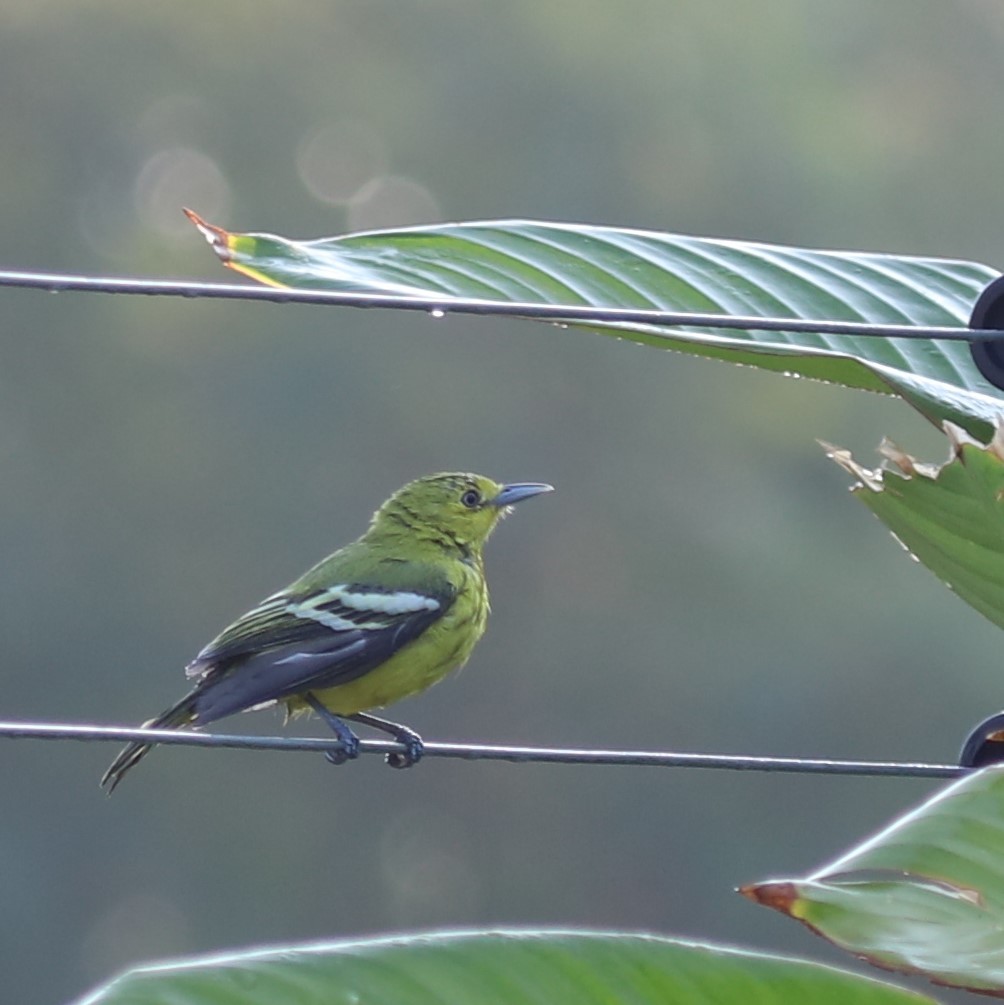Common Iora
A species of Ioras Scientific name : Aegithina tiphia Genus : Ioras
Common Iora, A species of Ioras
Botanical name: Aegithina tiphia
Genus: Ioras
Content
Description People often ask General Info
 Photo By Sivakumar Surampudi , used under CC-BY-SA-4.0 /Cropped and compressed from original
Photo By Sivakumar Surampudi , used under CC-BY-SA-4.0 /Cropped and compressed from original Description
Ioras have a pointed and notched beak with a culmen that is straight. The common iora is sexually dimorphic, males in the breeding season have a black cap and back adding to a black wing and tail at all seasons. Females have greenish wings and an olive tail. The undersides of both are yellow and the two white bars on the wings of the male are particularly prominent in their breeding plumage. The males in breeding plumage have a very variable distribution of the black on the upperparts and can be confused with Marshall's iora, however, the latter always has white tips to the tail. The nominate subspecies is found along the Himalayas and males of this population are very similar to females or have only a small amount of black on the crown. In northwestern India, septentrionalis is brighter yellow than others and in the northern plains of India humei males in breeding plumage have a black cap and olive on the upper mantle. In southwestern India and Sri Lanka multicolor has the breeding males with a jet black cap and mantle. The forms in the rest of southern India are intermediate between multicolor and humei with more grey-green on the rump (formerly considered as deignani but now used for the Burmese population). Several other populations across Southeast Asia are designated as subspecies including philipi of southern China and northern Thailand/Laos, deignani of Myanmar, horizoptera of southern Myanmar and the island chain of Sumatra, cambodiana of Cambodia, aeqanimis of Palawan and northern Borneo, viridis of Borneo and scapularis of Java and Bali. 
Size
14 cm
Colors
Black
Green
Yellow
Gray
White
Nest Placement
Tree
Feeding Habits
Common Iora primarily consume insects, foraging in trees usually in small groups. These birds exhibit gleaning behavior, meticulously searching among the branches. Unique dietary traits are not specified.
Habitat
Common Iora's habitat includes scrub forests, understories of mangrove forests, and light woodlands. They exhibit a preference for deciduous vegetation and drier regions, often inhabiting coastal areas, bamboo thickets, and agricultural landscapes with sparse trees. They also adapt to human-altered environments such as groves and parks. Common Iora is typically found at lowlands but can reside up to 2000 meters in the Indian Subcontinent and 800 meters in Southeast Asia.
Dite type
Insectivorous
People often ask
General Info
Feeding Habits
Bird food type
Behavior
Ioras forage in trees in small groups, gleaning among the branches for insects. They sometimes join mixed species feeding flocks. The call is a mixture of churrs, chattering and whistles, and the song is a trilled wheeeee-tee. They may sometimes imitate the calls of other birds such as drongos. During the breeding season, mainly after the monsoons, the male performs an acrobatic courtship display, darting up into the air fluffing up all his feathers, especially those on the pale green rump, then spiralling down to the original perch. Once he lands, he spreads his tail and droops his wings. Two to four greenish white eggs are laid in a small and compact cup-shaped nest made out of grass and bound with cobwebs and placed in the fork of a tree. Both male and female incubate and eggs hatch after about 14 days. Nests predators include snakes, lizards, crow-pheasant and crows. Nests may also be brood-parasitized by the banded bay cuckoo. Ioras moult twice in a year and the plumage variation makes them somewhat complicated for plumage based separation of the populations. A species of Haemoproteus, H. aethiginae, was described from a specimen of the common iora from Goa. Museum specimens for subspecies at Naturalis 
Species Status
Not globally threatened.